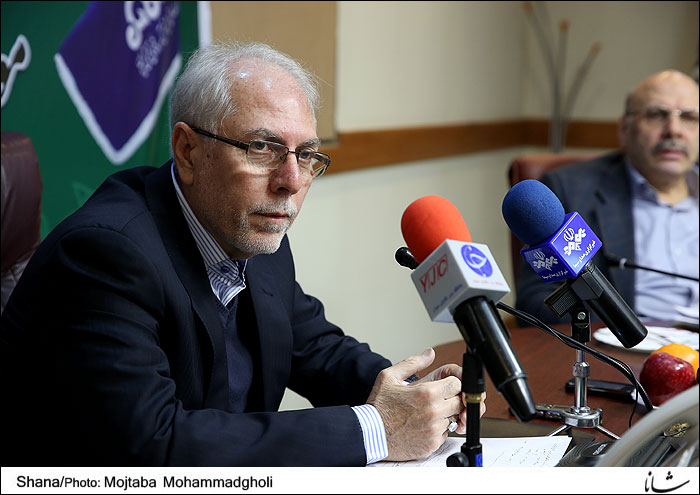As Iran’s petroleum minister, Bijan Zangeneh, has mentioned, the implementation of the first phase of Persian Gulf Star Refinery this year will reduce Iran’s gasoline imports to zero.
Nasser Sajjadi, managing director of National Iranian Oil Products Distribution Company (NIOPDC), recently said that Iran’s gasoline consumption was around 70.6 million liters a day (ml/d) during the first 11 months of the last calendar year, up only 2% year-on-year.
He said gasoline consumption has been curbed because of removal of fuel subsidies a year before.
“Last year (2014), we witnessed a downward trend in the [consumption of] oil products because of the implementation of the policy of development of CNG supply,” he said.
He added that kerosene, gasoil and fuel oil consumption fell respectively 10%, 18% and 36% during the 11-month period year-on-year. Sajjadi added that gasoil consumption was down 6.7 million liters.
During the 11-month period in the year to March 2015, 160 ml/d of liquid fuel (fuel oil, gasoil and kerosene) was consumed. In the year after, due to the development of gas supply development, the level of liquid fuel consumption reached 126.5 million liters, showing a decline of around 12 billion liters in the country.
5ml/d Oil Product Exports
Sajjadi referred to the export of 5 ml/d of oil products to neighboring countries, saying that a total of two billion liters of oil products was exported during the 11-month period of last calendar year.
He said that the first phase of Persian Gulf Star Refinery will become operational in October.
“By commissioning this refinery, Iran will no longer import gasoline and will become an exporter. Last [calendar] year, a total of 117,000 tons of liquefied gas was exported, while the relevant volume was 24,000 tons a year before,” he added.
Regarding bunkering in the country, Sajjadi said: “In the [calendar] year 1393, 10.3 ml/d of fuel oil was bunkered, which was up 25% to 13 ml/d in the year 1394.”
He said that during the first 11 months of the year 1393, a total of 435,000 liters of gasoil was bunkered, which reached 790,000 liters for the same period in 1394.
Sajjadi said a policy pursued by NIOPDC has been selling oil products like gasoil at borders in order to prevent fuel smuggling.
He said that border sales were 170 million liters during the 11-month period in the year 1393, which reached 416 million liters the year after.
Sajjadi highlighted a 16% increase in fuel supply to power plants, saying: “After that, a total of 7.6 bcm of more gas has been delivered to power plants in the country, saving 5.8 billion liters of liquid fuel.”
He said the implementation of border sales project has cut gasoil consumption by 5.15% to 2.42 ml/d, noting that such a decline would not have been possible without smart fuel card system.
Gas Station Branding
Sajjadi referred to the complicated process of standardization of 5,000 to 6,000 gas and CNG stations, which are mainly private, saying: “Implementation of this plan requires culture building and information for supply, regulations and criteria for branding among station owners.”
At present, he said, the city of Isfahan has reached agreement with the municipality for branding 40 gas stations.
“One of the main plans of NIOPDC is to replace liquid fuel with gas,” he said, noting that the operation of Persian Gulf Star Refinery will provide a large amount of liquid fuel this year.
“Therefore, efforts are being made to carry the surplus of these products to southern ports in the country to be exported,” Sajjadi said.
He also said that eight storage facilities in Tehran and Isfahan are now ready to serve NIOPDC.
As for the impacts of the implementation of Iran’s nuclear agreement with six world powers last January, Sajjadi said no foreign company has yet held talks with NIPODC for oil products’ export.
Euro-4 Gasoline
Sajjadi said the eight cities of Tabriz, Arak, Isfahan, Karaj, Tehran, Ahvaz, Shiraz and Mashhad are distributing 22 ml/d of euro-4 gasoline.
After the implementation of the first phase of Persian Gulf Star Refinery in October and development of Abadan refinery, 12 ml/d of euro-4 gasoline will be distributed in the cities of Hormuzgan, Yazd, Rafsanjan and Kerman.
Currently, of a total of 5,000 gas and liquid fuel distribution points in the country, only 179 are out of service due to legal problems.
Courtesy to Iran Petroleum Monthly


Your Comment